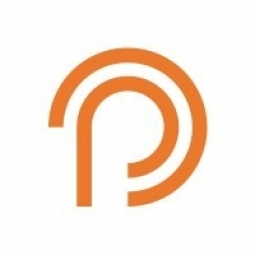Applicable Industries
- Healthcare & Hospitals
- Retail
Use Cases
- Time Sensitive Networking
About The Customer
The customer in this case study is a leading collections agency based in Illinois. They specialize in healthcare and retail receivables, working with a range of clients to manage their debt collections. The agency's primary goal was to increase the productivity of their agents by reducing the time spent on after-call tasks and increasing in-call time. They sought a solution that would allow their agents to focus more on talking to borrowers and less on administrative tasks, ultimately enabling them to work on more accounts and improve the agency's overall performance.
The Challenge
A leading Illinois-based collections agency, specializing in healthcare and retail receivables, was facing a significant challenge in managing their after-call work. The agency wanted to minimize the time their agents spent on after-call tasks and increase their in-call productive time. The goal was to enable their agents to work on more accounts and focus more on talking to borrowers, rather than getting distracted by other tasks. The agency was looking for a solution that could help them streamline their operations, increase productivity, and ultimately, improve their bottom line.
The Solution
To address this challenge, the agency turned to Prodigal ProNotes, a solution that leverages speech and Natural Language Processing (NLP)-based AI technology. Prodigal’s proprietary AI engine automatically summarizes debtor conversations into succinct notes in real-time. These auto-generated notes replace the manual notes that collectors would typically take during the after-call wrap. The note is generated as soon as a call ends, giving collectors the flexibility to review and edit it before submitting. This solution not only reduced the time spent on after-call tasks but also improved the efficiency and productivity of the agents.
Operational Impact
Quantitative Benefit

Case Study missing?
Start adding your own!
Register with your work email and create a new case study profile for your business.
Related Case Studies.

Case Study
Hospital Inventory Management
The hospital supply chain team is responsible for ensuring that the right medical supplies are readily available to clinicians when and where needed, and to do so in the most efficient manner possible. However, many of the systems and processes in use at the cancer center for supply chain management were not best suited to support these goals. Barcoding technology, a commonly used method for inventory management of medical supplies, is labor intensive, time consuming, does not provide real-time visibility into inventory levels and can be prone to error. Consequently, the lack of accurate and real-time visibility into inventory levels across multiple supply rooms in multiple hospital facilities creates additional inefficiency in the system causing over-ordering, hoarding, and wasted supplies. Other sources of waste and cost were also identified as candidates for improvement. Existing systems and processes did not provide adequate security for high-cost inventory within the hospital, which was another driver of cost. A lack of visibility into expiration dates for supplies resulted in supplies being wasted due to past expiry dates. Storage of supplies was also a key consideration given the location of the cancer center’s facilities in a dense urban setting, where space is always at a premium. In order to address the challenges outlined above, the hospital sought a solution that would provide real-time inventory information with high levels of accuracy, reduce the level of manual effort required and enable data driven decision making to ensure that the right supplies were readily available to clinicians in the right location at the right time.

Case Study
Improving Production Line Efficiency with Ethernet Micro RTU Controller
Moxa was asked to provide a connectivity solution for one of the world's leading cosmetics companies. This multinational corporation, with retail presence in 130 countries, 23 global braches, and over 66,000 employees, sought to improve the efficiency of their production process by migrating from manual monitoring to an automatic productivity monitoring system. The production line was being monitored by ABB Real-TPI, a factory information system that offers data collection and analysis to improve plant efficiency. Due to software limitations, the customer needed an OPC server and a corresponding I/O solution to collect data from additional sensor devices for the Real-TPI system. The goal is to enable the factory information system to more thoroughly collect data from every corner of the production line. This will improve its ability to measure Overall Equipment Effectiveness (OEE) and translate into increased production efficiencies. System Requirements • Instant status updates while still consuming minimal bandwidth to relieve strain on limited factory networks • Interoperable with ABB Real-TPI • Small form factor appropriate for deployment where space is scarce • Remote software management and configuration to simplify operations

Case Study
Gas Pipeline Monitoring System for Hospitals
This system integrator focuses on providing centralized gas pipeline monitoring systems for hospitals. The service they provide makes it possible for hospitals to reduce both maintenance and labor costs. Since hospitals may not have an existing network suitable for this type of system, GPRS communication provides an easy and ready-to-use solution for remote, distributed monitoring systems System Requirements - GPRS communication - Seamless connection with SCADA software - Simple, front-end control capability - Expandable I/O channels - Combine AI, DI, and DO channels

Case Study
Digital Retail Security Solutions
Sennco wanted to help its retail customers increase sales and profits by developing an innovative alarm system as opposed to conventional connected alarms that are permanently tethered to display products. These traditional security systems were cumbersome and intrusive to the customer shopping experience. Additionally, they provided no useful data or analytics.









